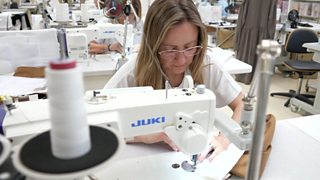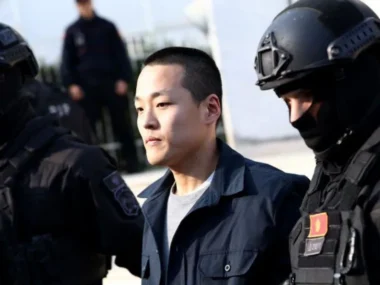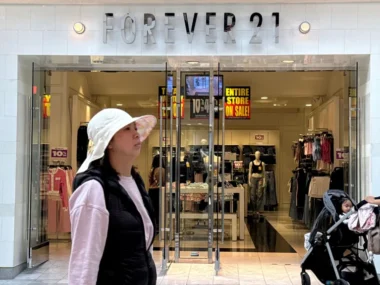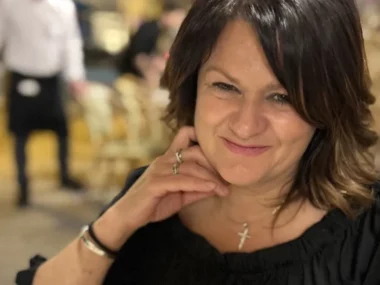It’s set to be a sizzling summer, blending romance, cowboy vibes, and rock and roll.
At least that’s what Mehdi Sousanne predicts. As a designer for Zara, he plays a role in shaping the collections for one of the most successful names in High Street fashion.
Zara is part of Inditex, the largest fashion retailer in the world, which operates other brands like Massimo Dutti and Pull & Bear.
The company works with 1,800 suppliers globally, but most of its products are shipped to Spain, where Zara is headquartered, before being distributed to stores in 97 countries.
Zara avoids advertising and seldom gives interviews. But as the brand celebrates 50 years since opening its first store, I’ve come to its expansive campus in Galicia for an exclusive look into how this secretive company functions.
This comes at a time when Zara faces challenges from rapidly evolving markets, with rising competition from budget online brands like Shein and Temu, which ship directly from China, along with concerns over US tariffs.
However, Inditex’s CEO, Oscar Garcia Maceiras, says US tariffs under President Donald Trump won’t disrupt their supply chains or alter Zara’s expansion plans in the US, now the company’s second-largest market.
“For us, diversification is key. We produce in nearly 50 different markets with non-exclusive suppliers, so we are accustomed to adapting to changes,” he explains.

Mehdi Sousanne has been with Zara for 11 years as a designer.
The business has evolved and expanded significantly since opening its first store just a short drive away in A Coruna.
Today, Zara employs 350 designers from around 40 countries.
“There are no rules in general. It’s all about feelings,” says Mehdi, who is responsible for creating the standout pieces of each season.
He notes that inspiration can come from various sources, including the “street,” cinema, and catwalks. Once a mood board is set, he enjoys sketching his ideas.
In the pattern cutting room, designs are transformed into paper samples, which are then pinned to mannequins. A team of seamstresses quickly creates the first fabric samples for a fitting.
Pattern maker Mar Marcote, who has worked with the company for 42 years, still uses a magnifying glass to inspect every piece of clothing before it goes into production.
“When you finish the item and see that it looks good, and then sometimes sells out, it’s marvellous,” she says.

Mar Marcote takes great pride in her work.
Zara has revolutionized the way we shop.
Traditionally, retailers released just two main collections each year—Spring/Summer and Autumn/Winter. For decades, most chains outsourced production to low-cost factories in the Far East, with products arriving up to six months later.
Zara disrupted this model by sourcing much of its clothing closer to home and frequently updating its products. This approach allowed the brand to react quickly to the latest trends, introducing new items to stores every week.
Over half of Zara’s products are made in Spain, Portugal, Morocco, and Turkey. The company even has a factory at its headquarters for small production runs, with seven other nearby factories it owns.
As a result, Zara can produce and distribute items within a matter of weeks.

Inspiration for Zara’s clothes can come from anywhere.
Basic fashion staples are produced with longer lead times in countries like Vietnam and Bangladesh.
Logistics and data also play a crucial role in Zara’s success. Each item of clothing is packaged and dispatched from its distribution centers in Spain and the Netherlands.
“What is absolutely critical is the level of accuracy,” says CEO Mr. Maceiras.
“This enables us to make the right decision at the last possible moment, assessing customer demand and adjusting our fashion offerings to match the preferences of our customers in various locations.”
In essence, it’s about delivering the right products to the right stores.
At headquarters, product managers receive real-time sales data from stores worldwide, along with customer feedback. This information is shared with designers and buyers, allowing them to adjust product ranges throughout the season based on demand.
Unlike many other high street brands, Zara only discounts during its biannual sales.

Zara’s CEO states that quality, creativity, and sustainability are central to the brand’s offering.
Is Zara losing its appeal after reporting slower sales growth earlier this year?
“The key challenge for Inditex is staying relevant in a fashion world that’s becoming faster and cheaper,” says William Woods, European retail analyst for Bernstein.
Mainstream competitors like H&M, Mango, and Uniqlo are all striving to catch up, and the market has also been disrupted by Shein and Temu.
Shein generated $38bn in global sales last year, almost matching Inditex’s figures.
When asked about the threat posed by Shein and Temu, Mr. Maceiras emphasizes that Zara’s business model isn’t focused on price.
“Of course, we aim to offer affordable products. But for us, it’s crucial to deliver fashion that is inspirational, with a focus on quality, creativity, and sustainability.”
Zara has come a long way since founder Amancio Ortega started the business.
The company remains largely controlled by his family, with his daughter Marta now serving as the chairwoman.
At 89, Mr. Ortega remains famously private but still makes occasional appearances, according to Mr. Maceiras.
“He’s a presence, whether physical or moral, absolutely every day.”











